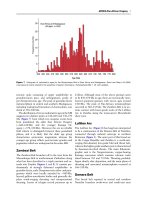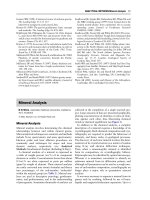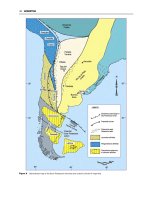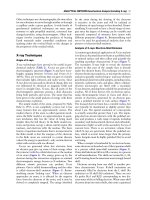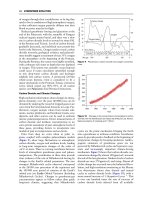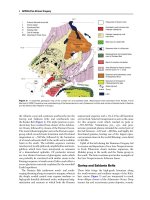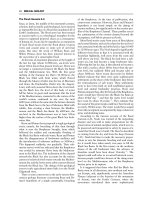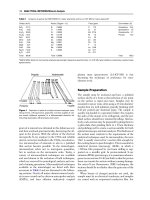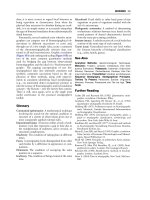Encyclopedia of geology, five volume set, volume 1 5 (encyclopedia of geology series) ( PDFDrive ) 309
Bạn đang xem bản rút gọn của tài liệu. Xem và tải ngay bản đầy đủ của tài liệu tại đây (61.46 KB, 1 trang )
270 BIOLOGICAL RADIATIONS AND SPECIATION
Figure 4 Speciation and the gradualist model. The present day radiolarian species Pterocanium charybdeum extends well back into
the Miocene where a subspecies (P. c. allium is recognized). At about 4 million years ago a new species, P. prismatium arose and
subsequently went extinct about 1.8 million years ago. To compile this diagram samples representing populations at 50 000 year
intervals were taken from piston cores during the key 4.5 3.5 million year interval (much more widely spaced outside of this time
band). The radiolarian tests were measured for 32 morphological characters such as length, breadth, angles and outlines and
subjected to a multivariate discriminant analysis. The x axis of the diagram shows the value of the discriminant function that best
separates the species. The boxes are the population means Ỉ 1 standard error. The histograms on the right show discriminate scores
at the point of the intermediate population (lower diagram) and the sampling level 50 000 years later (upper diagram), showing clear
separation at this time; these two documenting the speciation event. Notice that both lineages continue to diverge morphologically in a
gradualist manner long after the speciation event. Reproduced from Lazarus DB (2001) Speciation and morphological evolution. In:
Briggs DE and Crowther PR (eds.) Palaeobiology II, pp. 133 137. Oxford: Blackwell Scientific.
3. Interactions between organisms – such as the extinction of one kind allowing ecological and
phenotypic diversification in another. Alternatively it may be true that the morphological and
diversification of one group allows similar phenomena in another (e.g., insects and plants). For
example, in fishes, it has long been noted that the
evolution of many durophagous (mollusc crushing) lineages coincides with the Mesozoic diversification of bivalve and gastropod molluscs. Many of
these ‘associations’ are anecdotal and, while they
may well be true, they need firm experimental
evidence for their justification.
It is rarely possible to isolate a single cause and in
all probability complex interactions between two
or more factors are ultimately responsible for radiations. Therefore, the study of these evolutionary
phenomena is both frustrating and challenging,
demanding lengthy and detailed data collection.
Factors which may distort our view of radiations
include the following:
1. Imperfections of the fossil record. Large hiatuses or
differential preservation will inevitably distort our
perception of radiations. For example, the sudden
appearance and apparent radiation of many catfishes (most of which are freshwater) in the Early
Tertiary must be judged against the knowledge that
there are very few freshwater fish-bearing deposits
in the underlying Upper Cretaceous.
2. Appearance of many diverse animals and plants
associated with Lagerstaătten deposits. Such deposits
dramatically increase the numbers and morphological diversity of species that may, in reality,
have had a long unrecorded history.
